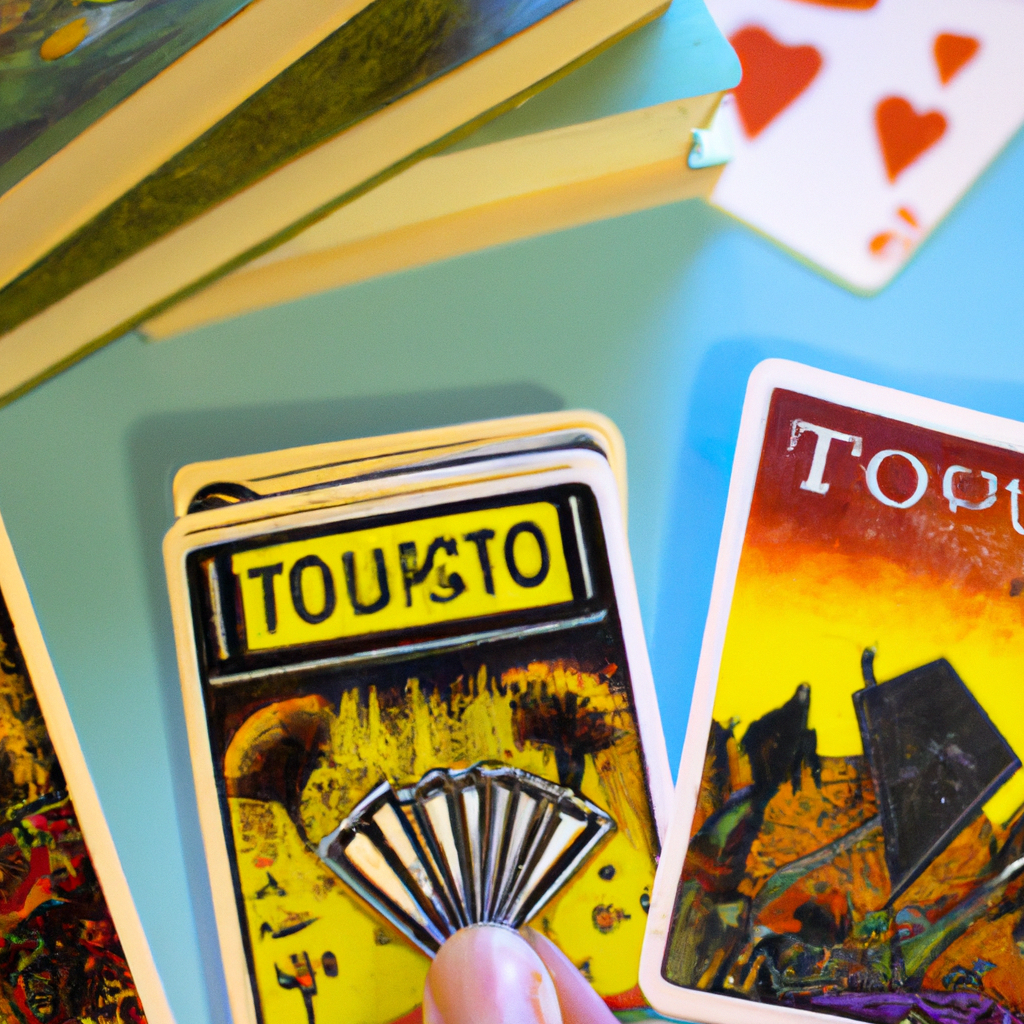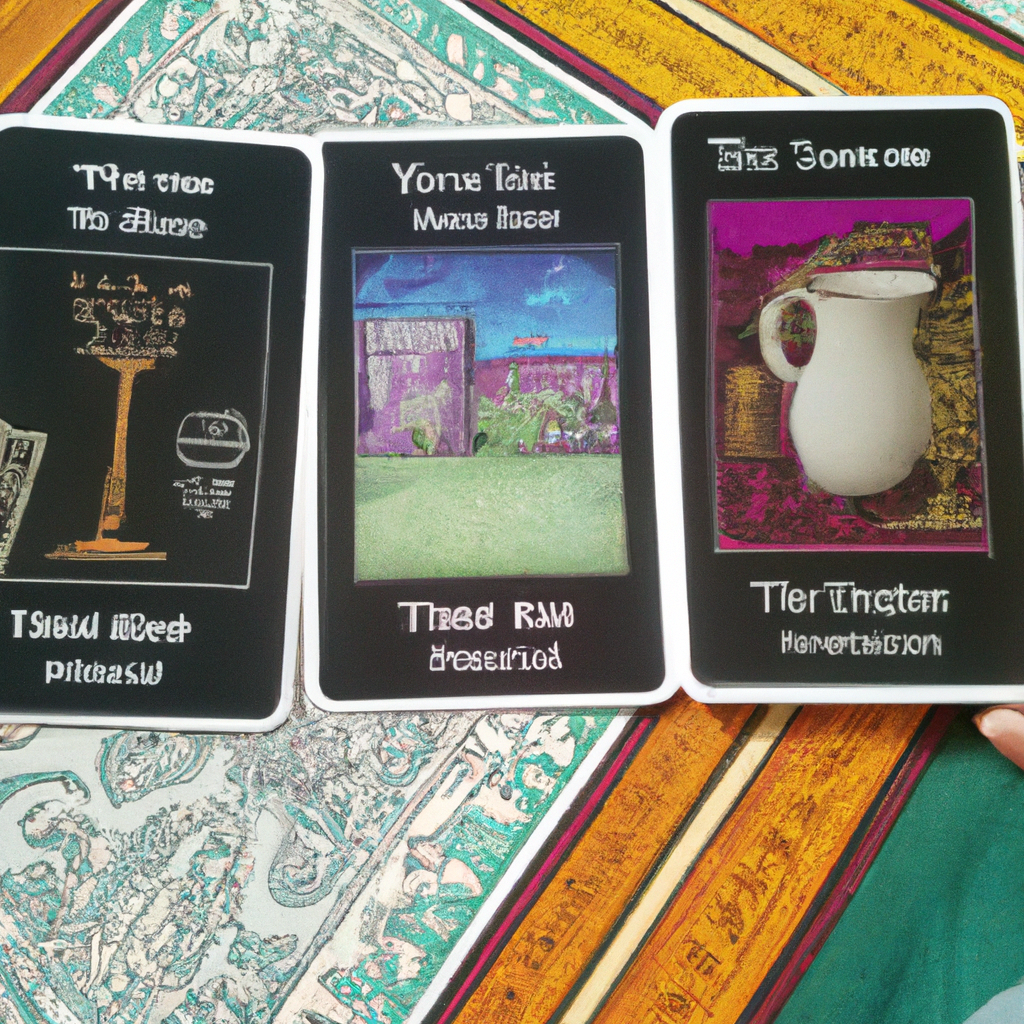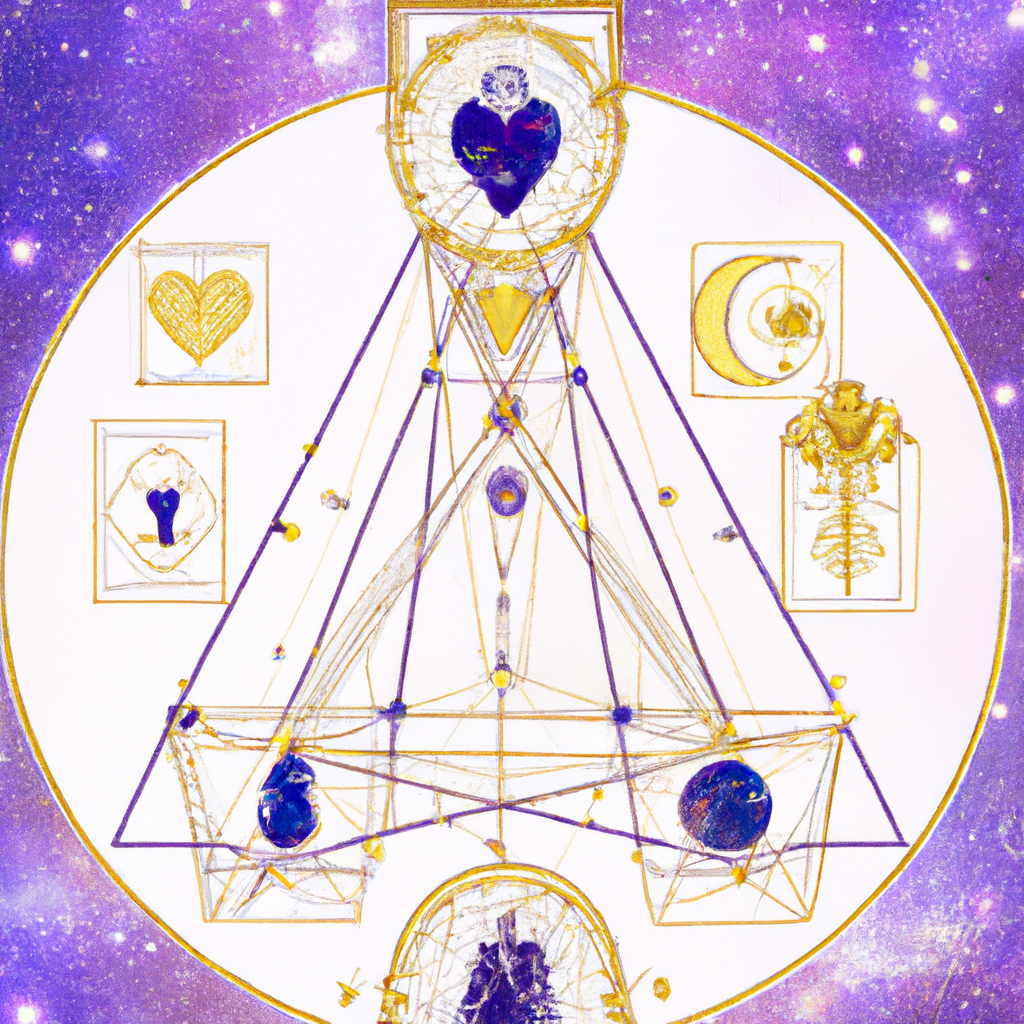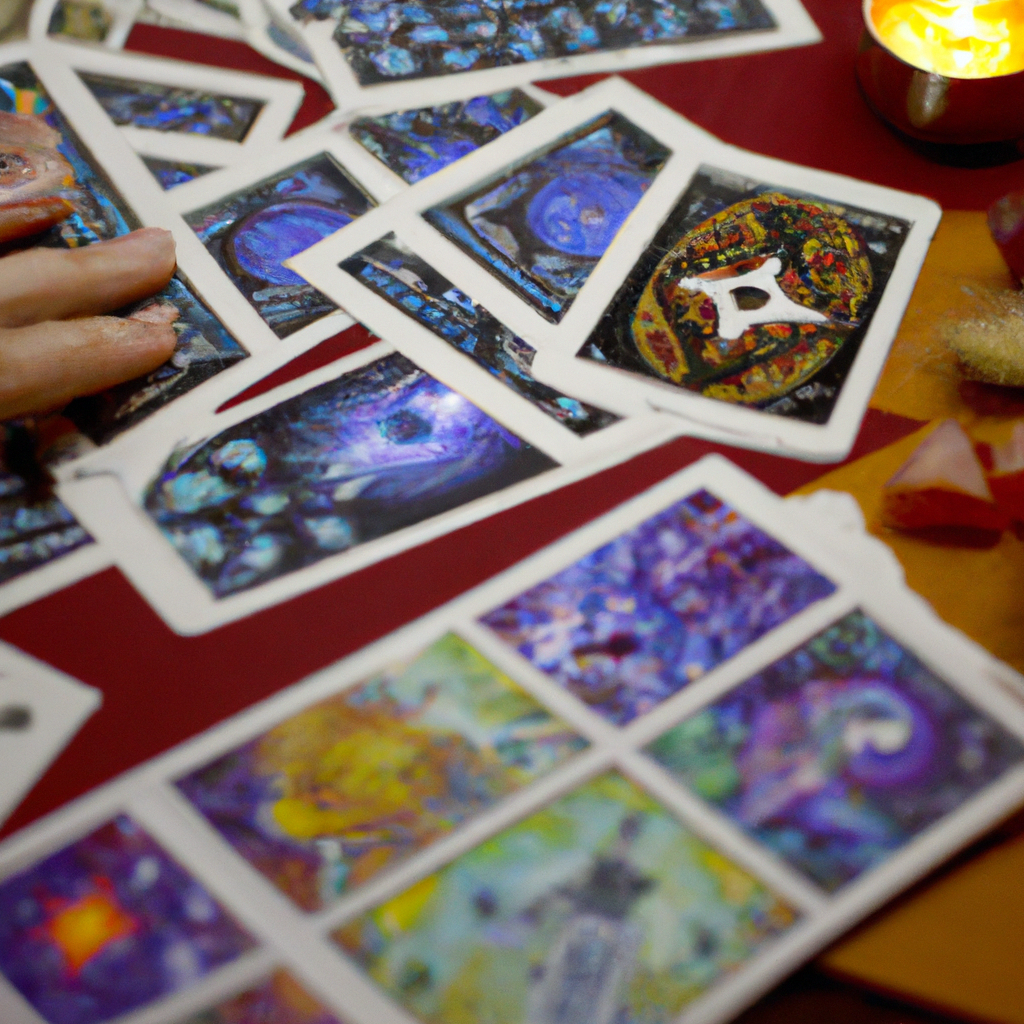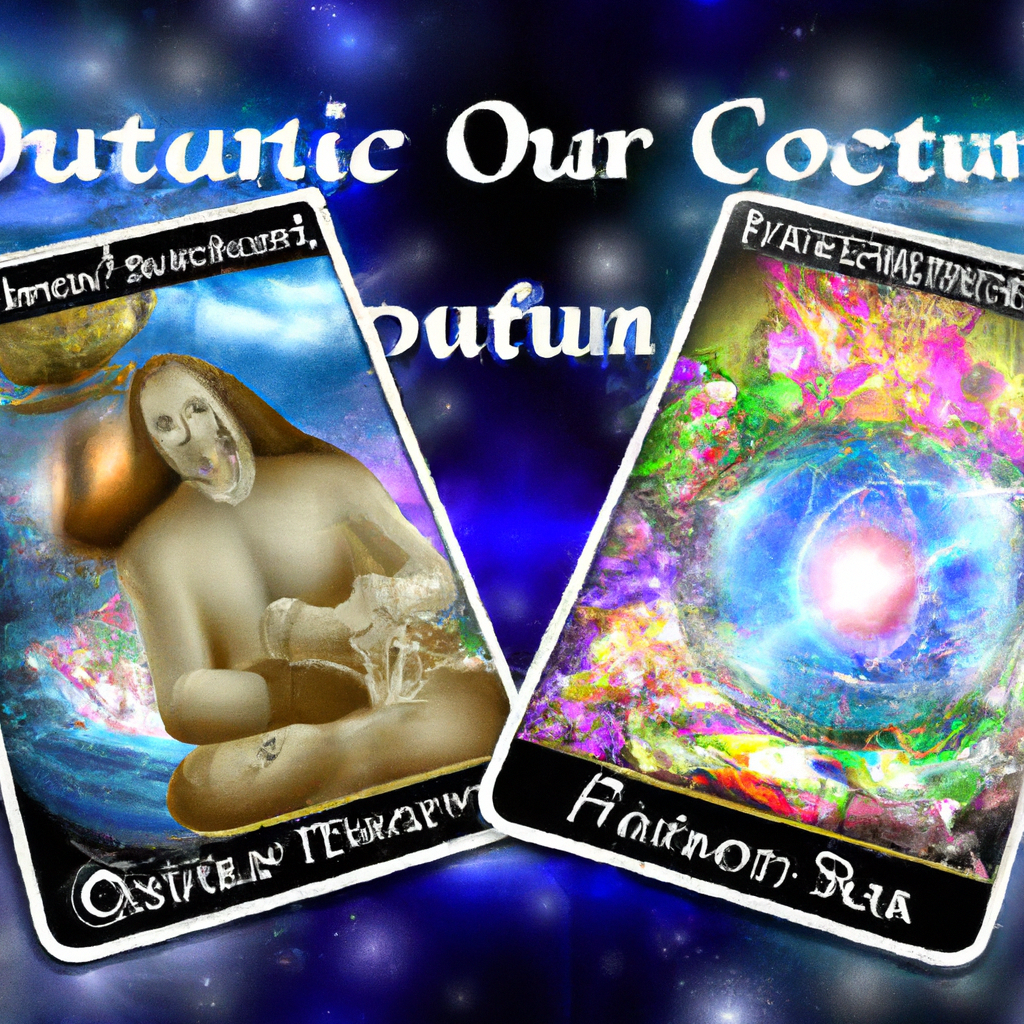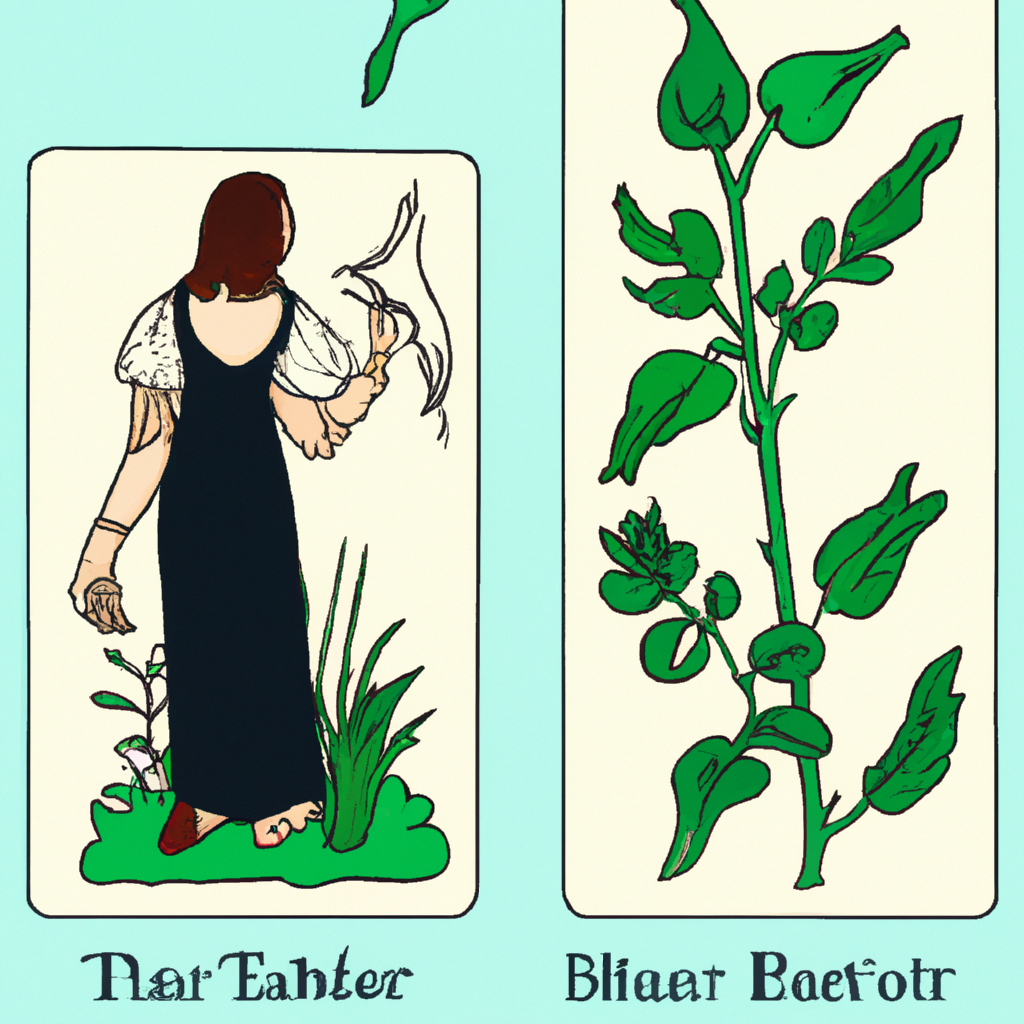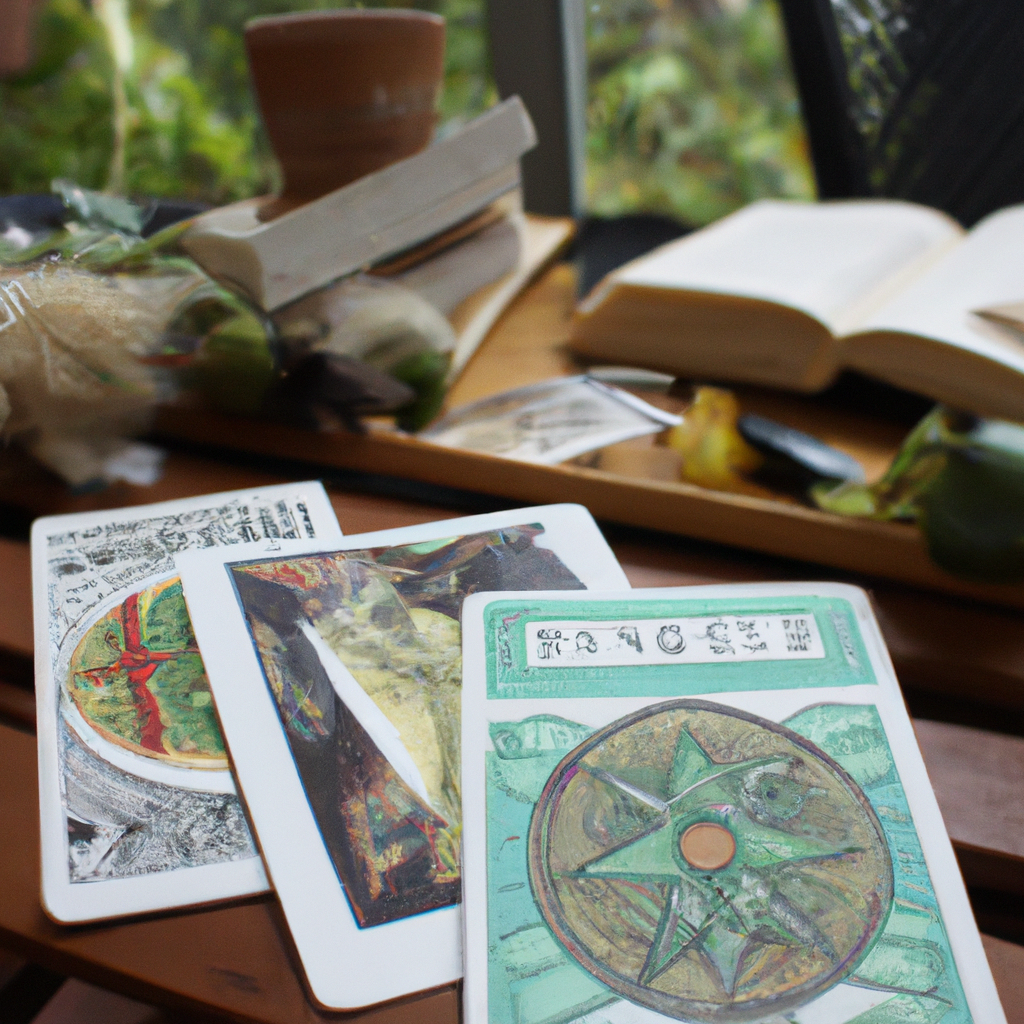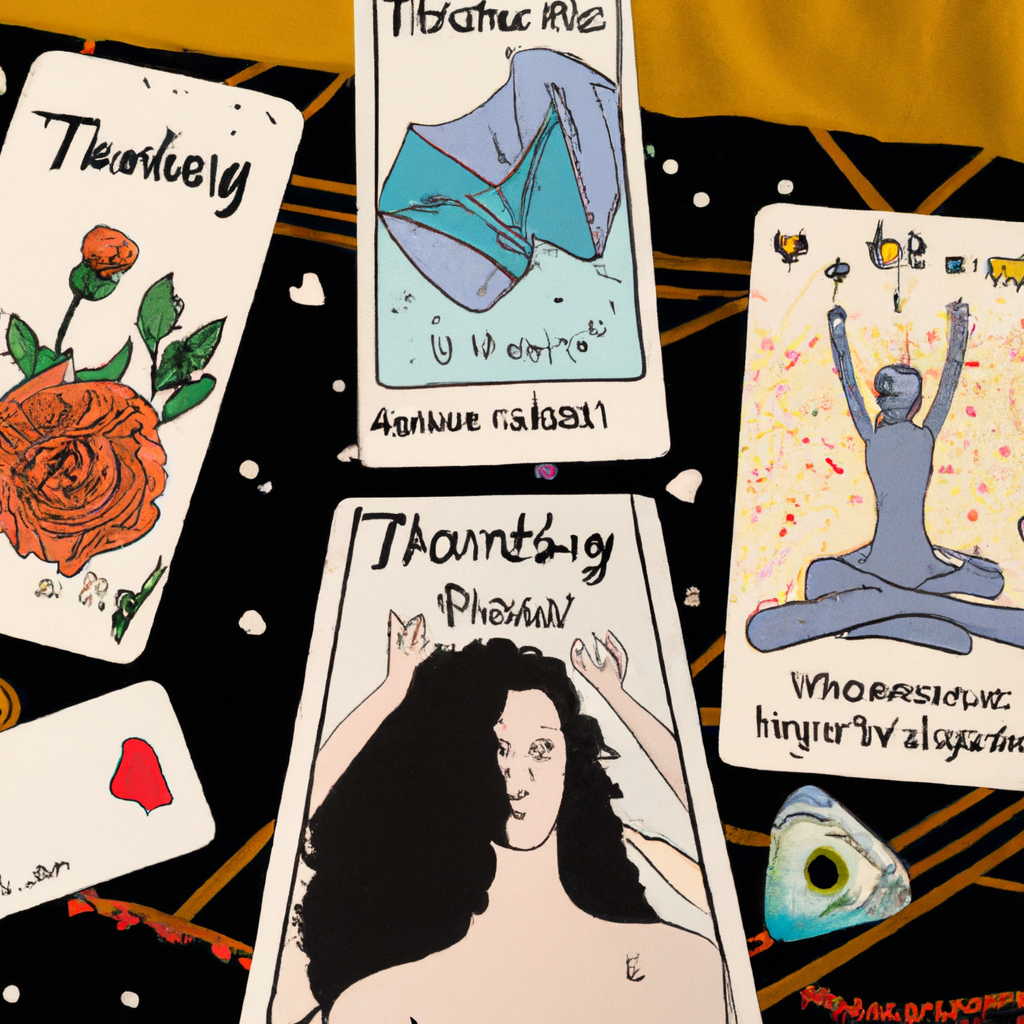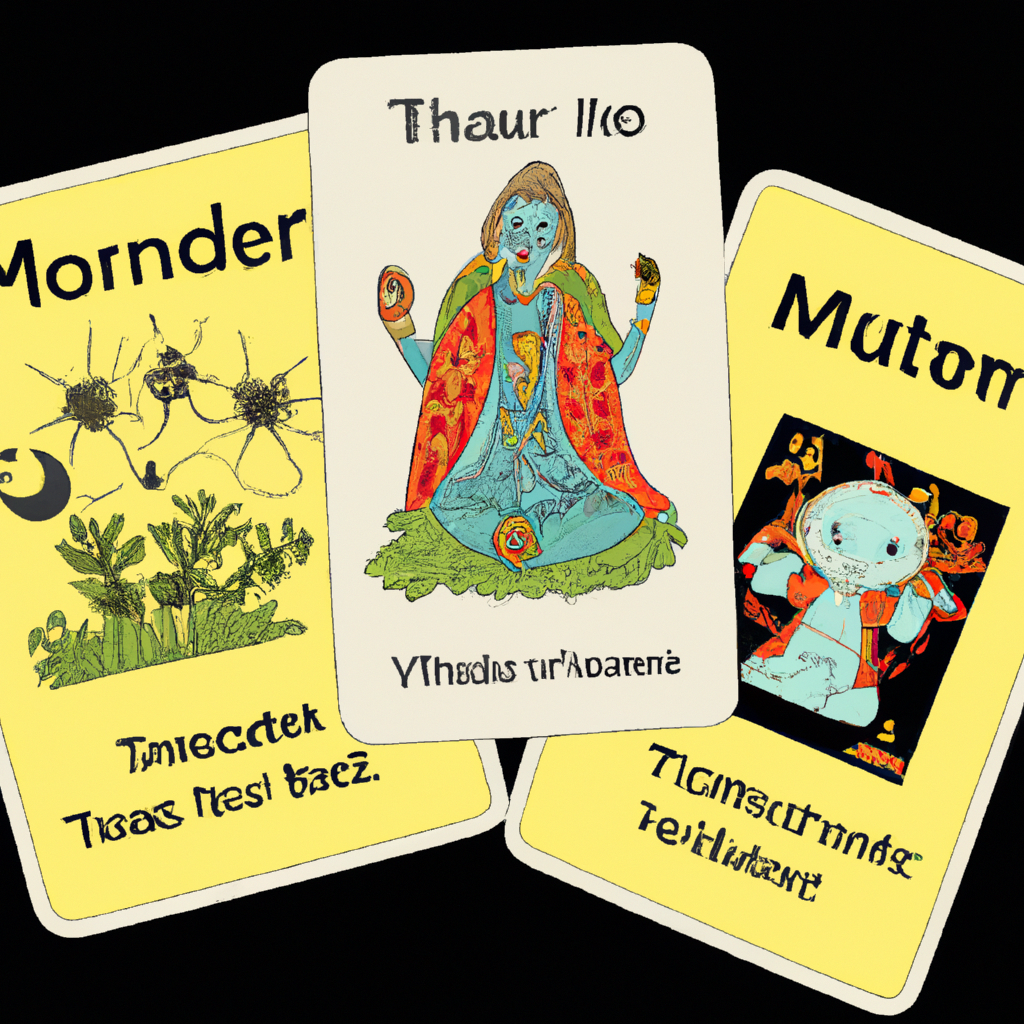Shopping Cart.
No products in the cart.
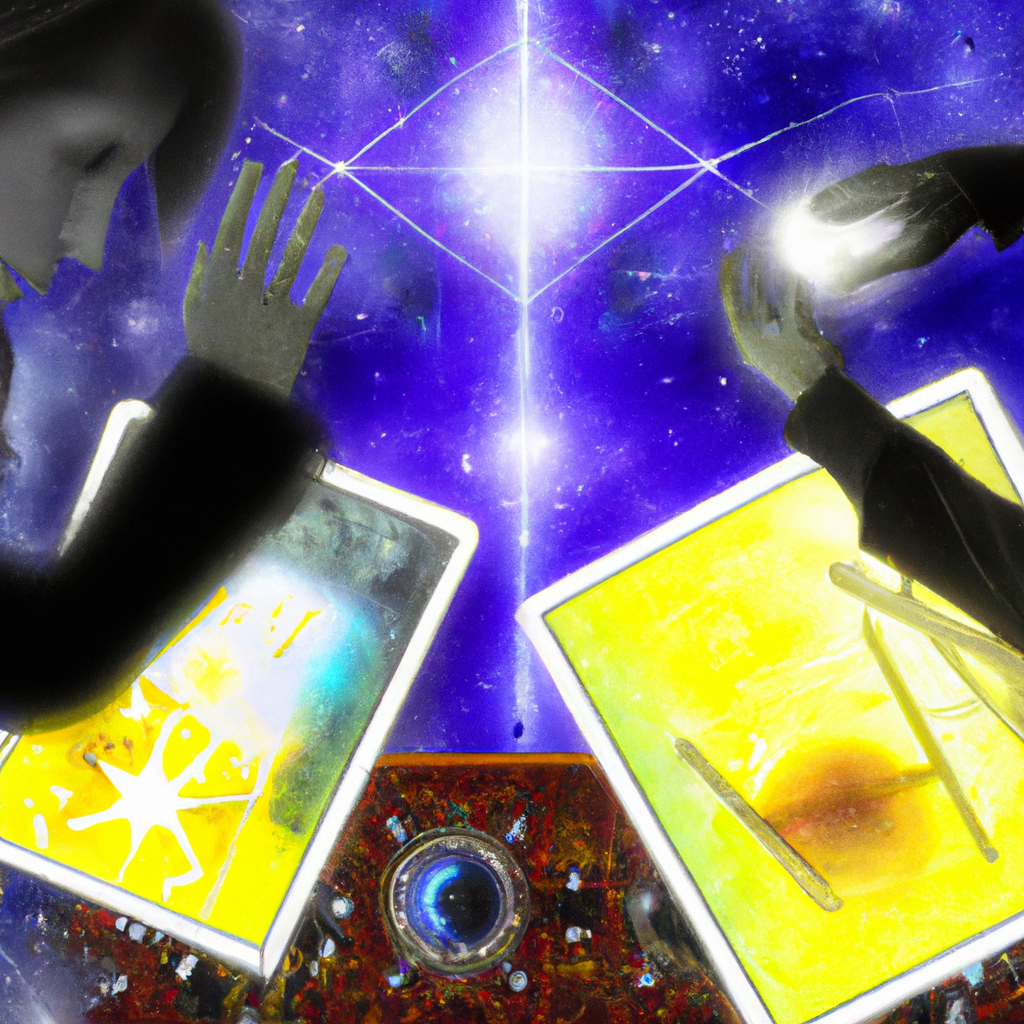
Tarot and remote viewing may seem like two distinct practices, but they share a common thread: both tap into distant energies and unseen realms to provide insight and guidance. As a tarot reader and remote viewer myself, I’ve found that these two practices can complement each other beautifully, creating a rich tapestry of intuitive understanding.
Let’s start with tarot. This ancient practice uses a deck of 78 cards, each with its own unique symbolism, to provide insight into the past, present, and future. As a tarot reader, I don’t see the cards as predicting the future, but rather as tools to tap into the subconscious mind and the energies surrounding a situation. When I shuffle the deck and lay out the cards, I’m not just looking at ink on paper. I’m tuning into a deeper, more subtle level of reality, where time and space are fluid and everything is interconnected.
Now, let’s turn to remote viewing. This practice, which was developed by the U.S. military and later popularized in the civilian world, involves using psychic abilities to perceive and describe distant or unseen targets. As a remote viewer, I might be asked to describe a location on the other side of the world, or an event that happened in the past, or even something that hasn’t happened yet. Like tarot, remote viewing taps into the idea that we’re all connected on a deeper level, and that time and space aren’t as solid as they seem.
So, how do tarot and remote viewing intersect? Well, in my experience, they both involve tapping into the same underlying field of energy and information. When I lay out a tarot spread, I’m tuning into the energies surrounding the question or situation at hand. When I do a remote viewing session, I’m tuning into the energies surrounding a specific target. In both cases, I’m accessing a kind of universal database, where all information—past, present, and future—is stored.
Moreover, both practices require a similar mindset. To be effective, both tarot readers and remote viewers need to quiet their minds, tune out distractions, and open themselves up to receive information. This often involves entering a meditative or trance-like state, where the rational mind takes a backseat and intuition takes the wheel.
In my own practice, I’ve found that tarot and remote viewing can enhance each other. Sometimes, I’ll do a tarot reading to get a general sense of the energies surrounding a situation, and then do a remote viewing session to get more specific information. Other times, I’ll use tarot to help interpret the data I get from a remote viewing session. The symbols on the tarot cards can provide a useful framework for understanding the often cryptic and symbolic information that comes through in remote viewing.
In conclusion, while tarot and remote viewing may seem like separate practices, they’re really two sides of the same coin. Both tap into distant energies and unseen realms, providing insight and guidance. And both require a similar mindset and approach. So, whether you’re a seasoned tarot reader looking to expand your skills, or a curious newcomer interested in exploring the world of psychic phenomena, I encourage you to explore the connection between tarot and remote viewing. You might be surprised at the insights you uncover.
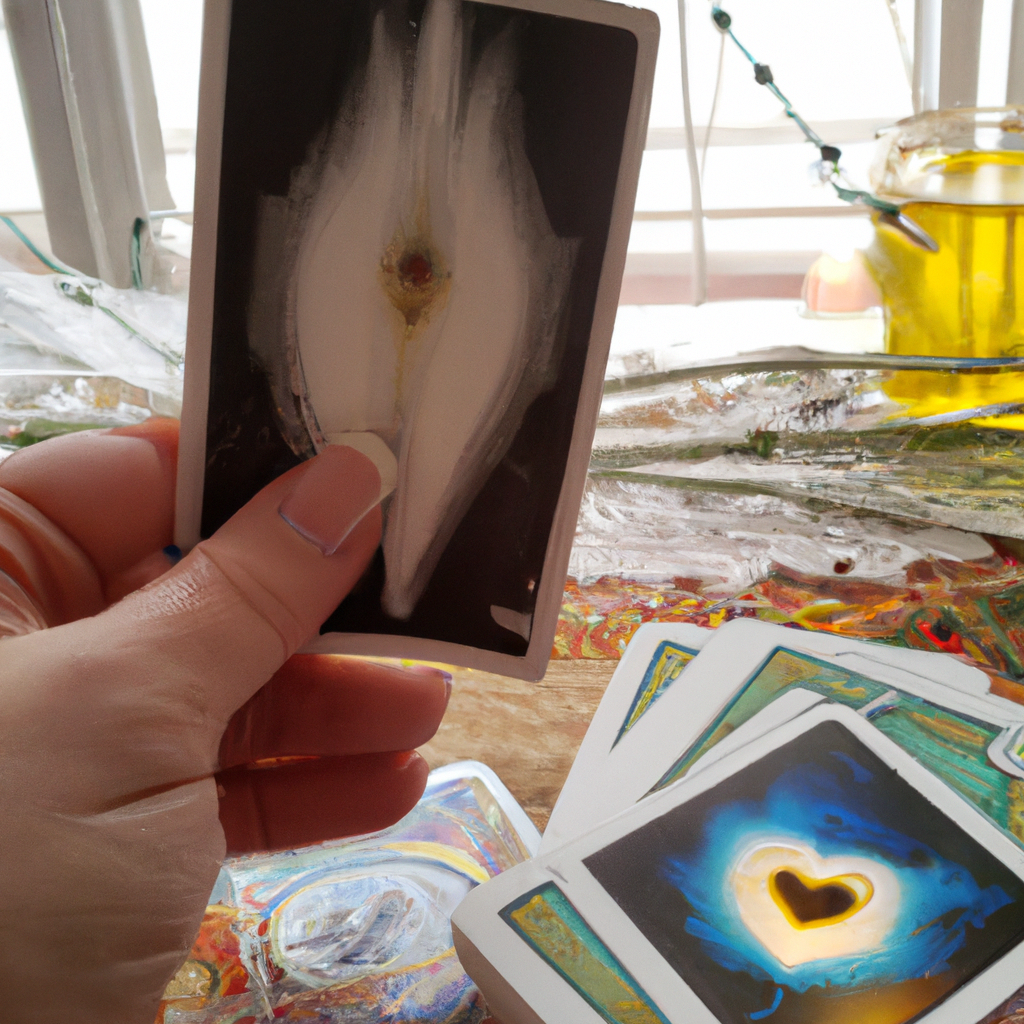
Tarot and remote viewing are two fascinating practices that have intrigued and captivated people for centuries. They both tap into distant energies, allowing us to access information and insights that are not readily available to our physical senses. This article will guide you through the intriguing world of tarot and remote viewing, and how they can be used to harness distant energies.
Imagine you’re sitting in your living room, shuffling a deck of tarot cards. You draw a card, and suddenly, you’re transported to a different place or time. You see images, hear sounds, and feel emotions that seem to come from somewhere else. This is the power of tarot. It’s not just about predicting the future; it’s about connecting with the energies that surround us, both near and far.
Tarot cards are a tool for tapping into these energies. Each card in the deck represents a different aspect of life, from love and relationships to career and personal growth. When you draw a card, you’re not just picking a random image; you’re tapping into the energy of that aspect of life. You’re connecting with the collective consciousness, the shared experiences and emotions of people all over the world.
Now, let’s shift our focus to remote viewing. This is a practice that involves using your mind to perceive distant or unseen targets. It’s like having a psychic telescope that allows you to see across space and time. Remote viewers often describe their experiences as if they were physically present at the target location, even though they’re sitting comfortably in their own homes.
Remote viewing is not about guessing or making up stories. It’s about quieting the mind, focusing the attention, and allowing the distant energies to come to you. It’s a skill that can be developed with practice, just like playing a musical instrument or learning a new language.
So, how do tarot and remote viewing relate to each other? They’re both ways of accessing distant energies. When you draw a tarot card, you’re connecting with the energy of a specific aspect of life. When you practice remote viewing, you’re tuning into the energy of a specific location or event. They’re different tools for the same job.
But there’s more to it than that. Both tarot and remote viewing require a certain mindset. You have to be open to the possibility that there’s more to the world than what we can see with our physical eyes. You have to be willing to trust your intuition, to follow your gut feelings, even when they don’t make logical sense.
And perhaps most importantly, both tarot and remote viewing are about connection. They remind us that we’re not isolated beings, living in our own little bubbles. We’re part of a vast, interconnected web of energy. We can tap into this web, draw on its wisdom, and use it to navigate our lives.
So, whether you’re a seasoned tarot reader or a budding remote viewer, remember this: you’re not just playing with cards or daydreaming about distant places. You’re tapping into distant energies, connecting with the world around you in a profound and meaningful way. And who knows? You might just discover something amazing along the way.
Tarot and remote viewing may seem like two distinct practices, but they share a common thread: both tap into distant energies and unseen realms. The tarot, with its rich symbolism and intuitive nature, can play a significant role in enhancing remote viewing abilities.
Let me share a little story. I remember the first time I held a tarot deck in my hands. The cards felt heavy, imbued with a sense of mystery and power. As I shuffled the deck and laid out the cards, I felt a connection to something beyond the physical world. It was as if the cards were speaking to me, revealing insights and messages from the universe.
This experience sparked my interest in the metaphysical, leading me to explore other practices such as remote viewing. Remote viewing, for those unfamiliar, is the ability to perceive information about a distant or unseen target using extrasensory perception or “sensing with the mind.” It’s like having a psychic telescope that allows you to see across space and time.
As I delved deeper into both tarot and remote viewing, I began to see how they could complement each other. The tarot, I realized, could serve as a tool to enhance my remote viewing abilities. The cards could act as a bridge, connecting my conscious mind to the subconscious, where remote viewing takes place.
Think of it this way: when you’re remote viewing, you’re tapping into a stream of information that exists beyond the physical senses. It’s like tuning into a radio frequency that’s usually out of range. The tarot, with its rich symbolism and imagery, can help fine-tune that frequency. Each card in the tarot deck represents a specific energy or concept. By focusing on these symbols, you can guide your mind towards the information you’re seeking.
For instance, let’s say you’re trying to remote view a specific location. You could use the tarot card that best represents that place to help focus your mind. If you’re viewing a bustling city, the Three of Pentacles, which symbolizes teamwork and collaboration, might be a good choice. If you’re viewing a serene forest, the Hermit, representing solitude and introspection, could be more appropriate.
Moreover, the tarot can also help interpret the information received during remote viewing. Sometimes, the information comes in the form of vague impressions or symbols. The tarot, with its established meanings and interpretations, can provide a framework for understanding these symbols.
In my own practice, I’ve found that using tarot in conjunction with remote viewing has not only improved my accuracy but also made the process more enjoyable. It’s like having a trusted guide on this metaphysical journey, providing direction and clarity.
In conclusion, the tarot can play a significant role in enhancing remote viewing abilities. By acting as a bridge between the conscious and subconscious mind, it can help focus the mind and interpret the information received. So, if you’re interested in remote viewing, consider incorporating tarot into your practice. You might be surprised at how much it can enhance your abilities. After all, both tarot and remote viewing tap into the same distant energies and unseen realms. They’re two sides of the same coin, each offering a unique perspective on the mysteries of the universe.
Tarot and Remote Viewing are both practices believed to tap into distant energies, providing insights or information beyond the realm of normal sensory perception. Tarot uses a deck of cards to interpret symbols and patterns, while Remote Viewing involves perceiving a distant or unseen target using extrasensory perception. However, the effectiveness and validity of these practices are subjective and largely depend on personal beliefs, as they lack empirical evidence and scientific backing.
